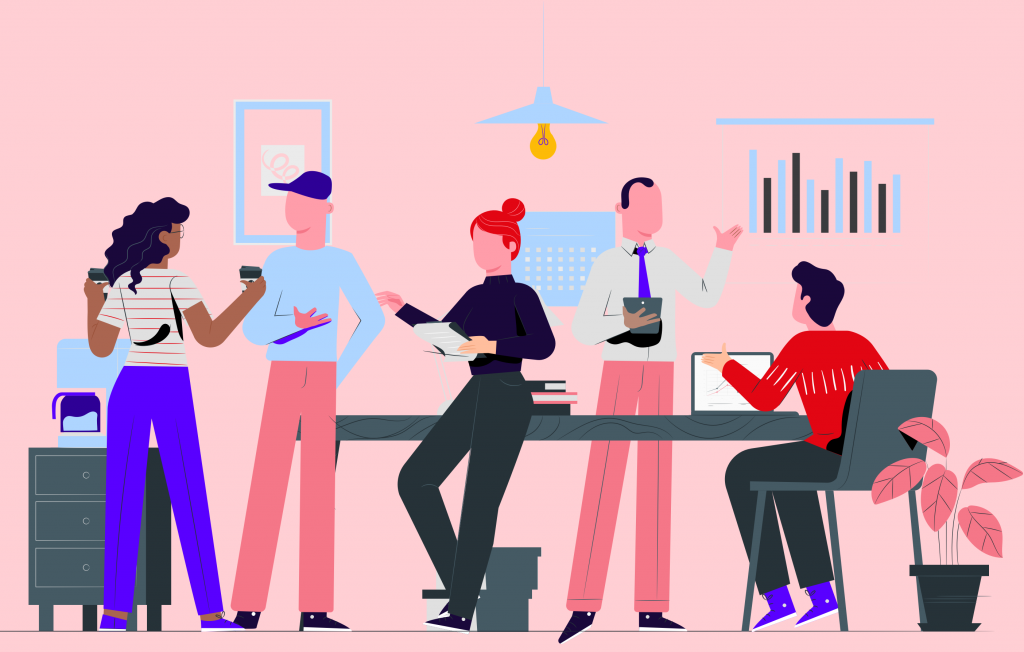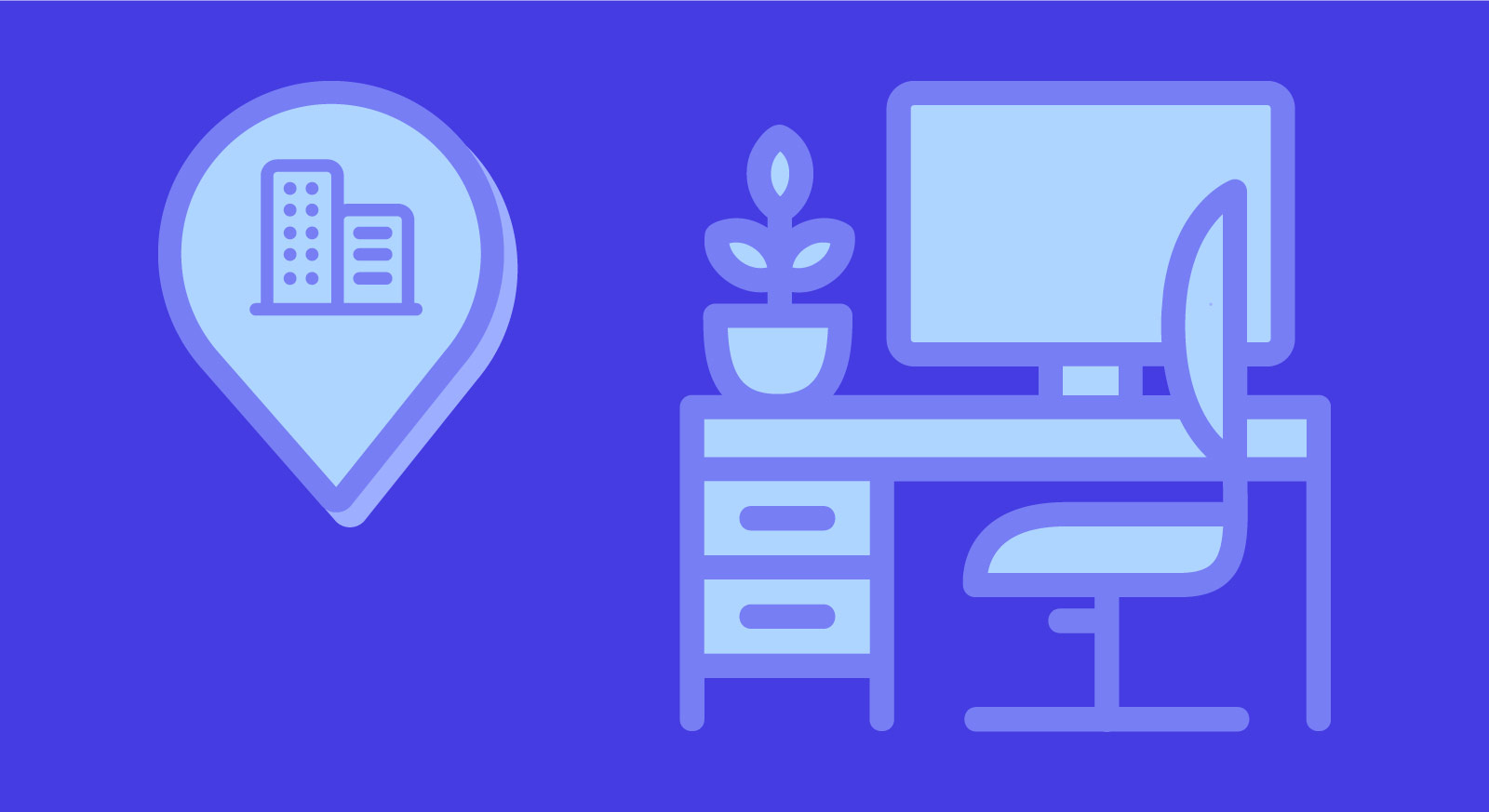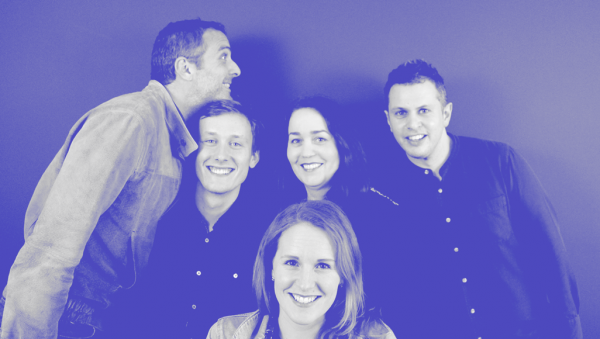Welcome back to our three-part series on how Covid-19 has transformed how we work. As user researchers, we naturally jumped at the opportunity to explore peoples' experiences in the first six months of remote-first working.
Last September we sent out a survey to understand how working remotely has affected employees’ productivity and well-being. Our research targeted people who before the pandemic were primarily office workers, working at the same company for that previous six months.
In this third, final part of the series, we share how we review what peoples’ experiences have been in the office since Covid-19 arrived. If you’re interested to read how people benefited from remote work then read part one, or if you’re interested in the negative then read part two.
According to our survey, 62% reported they could choose to work from home or the office, 8% said they can choose, but must go to the office a few times a week. What was it like when people ventured in?
How office life changed for the better
1. A reinvention of the workspace
Since the pandemic began, the office is no longer the place to go for your 9-to-5pm work schedule. Restrictions on numbers allowed in and the uncertainty around commuting to and from work have changed the motivations behind visiting the workplace. In fact, by September, only 31% of respondents had been to their offices since the pandemic began.
When asked ‘what are the positive changes to the workplace’, the majority of respondents, including those who hadn’t been to their offices when this survey took place, stated they appreciated the flexibility of visiting their workplace just when needed.
When we dug deeper into the variety of reasons why employees might want to go into the office, we found that they might want to venture in when in need of a dedicated space for concentration, as it’s free from home distractions of dependents in the household; or when looking for a change in scenery so they can set up boundaries between their personal and professional lives.
Although the office will always be a workstation to go to work and socialise with colleagues, this pandemic has revealed a new set of employees’ needs that had not been widely considered before Covid-19. Having a quiet zone so people can do focus work; or more areas for collaborative working so they can capitalise on the time they are in the office will increase employee engagement, happiness and productivity. Office layouts will need to be remodelled to reflect this over the coming years.
“We have revamped the whole office to project-based working and promote a more flexible week where employees choose if they want to work from home or in the office.” Signe, Norway

2. The extra space in the office
Survey respondents that have been into their offices said they appreciated the extra space they had and the hygiene measures taken by their organisations. Two key positives that came out were not having to experience the race for a desk in a crowded office and having the peace of mind and feeling of safety due to appropriate cleaning measures.
Having a working rota and policies for booking desks, reducing the hours in the office, and applying social distancing between desks are some of the steps taken to control who goes in and when. Although it might seem inconvenient at first, employees were happy as it meant their companies have taken all precautions to make their workplace safer in a post Covid-19 world.
“There is a cap on number of people in the office, and plenty of sanitiser.” Bradley, UK
How office life changed for the worse
1. People miss light, carefree social interactions
There has been an adjustment for people who have been into offices since Covid-19 started. New safety measure notices, restrictions on people capacity and activities have made the whole working experience more difficult.
The social aspect that makes the office ‘fun’, such as the casual chitchat, lunch at the canteen, or ‘feel the buzz’ of the company are not there when numbers in the office are lower. Many reported there is a new clunkiness to being in an office environment. Masks, one-way systems, restricted seating options and kitchens closed contribute to an uneasy feeling.
Although health and safety measures are highly needed and appreciated these days, it’s important that organisational leaders and office managers adjust their expectations of what purpose the office serves.
The machinery is no longer on the factory floor. Organisations have in this past year needed to rethink their physical space and have made investments in digital collaborative tools. The experiment of working remotely has now ended. This is business as usual. Looking to the future, as organisations develop a hybrid model there should be attention to how social needs for the office space are prioritised.
“Being spaced out from my team, less capacity to use meeting rooms, less food in the kitchen. Just more friction in all interactions.” Petra, UK
2. The office is a potential Covid-19 hotspot
52% of all respondents say health and safety concerns make them feel nervous about returning to the office. For people going into their office spaces there are new considerations and worries.
People are thinking for the first-time; how did co-workers get to work? How close am I to another person? Has that surface been wiped down recently? These concerns and safety measures will remain for a long time to come, and the shock of the pandemic will mean the casual feeling of being in the workspace will not return for many months into 2021 and beyond.
If in the office, 63% wouldn’t shake hands with colleagues.
“I really don’t believe that there is enough ventilation in the office for it to be a safe environment for folks to work from.” Maggie, USA
“It doesn’t feel relaxing, there is a lot to think about to keep everyone safe.” Gavin, UK
At this stage of the pandemic the office is the exception rather than the default place of work for people we surveyed. Amongst the minority that have been into the office: 38% go twice a week and 35% have visited only a handful of times. Employers are not saying employees must be in the office to work effectively. This may change through 2021 as vaccination roll out enables restrictions to ease and companies to change their policies.
Whether you’re an employee or a leader, we hope you enjoyed this non-standard report and it has given you insight into the common experiences office workers have faced during the first stages of the pandemic. We hope it has encouraged you to think deeper about common emotional and practical challenges of working through the pandemic.
For employees, remote-first work has shown the importance of resilience, adaptability and flexibility. Being able to adapt to our new normal, including all personal and professional changes it brings with it, will allow us to move forward and transition into this new work model. 83% of people we surveyed want a hybrid work model in the future.
For employers, it has not only forced organisations to accelerate their digital transformation and adopt new technologies faster than expected; but also, to introduce new ways of working that are centred around the workforce needs and work- life balance. Humanising the work experience may be one of the most impactful legacies of this pandemic.
Organisations have the choice of entering a post-pandemic era with a simply enhanced version of their organisational working model or can create a new one based on trust, adaptability and innovation. What choice will you make?
Although Covid-19 has been a dreadful worldwide tragedy throughout 2020, that has left scars across the world, it has also brought many good lessons both at a personal and organisational level for office workers. We are excited to continue to track how hybrid work cultures develop through 2021 and beyond.
If you read and have had any reflections based on what you read then do share using the hashtag #sparckhybrid, or send us an email. We’ll be glad to hear your feedback.



